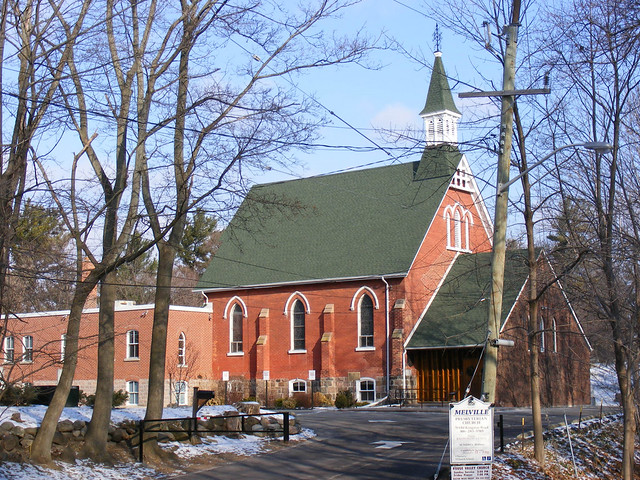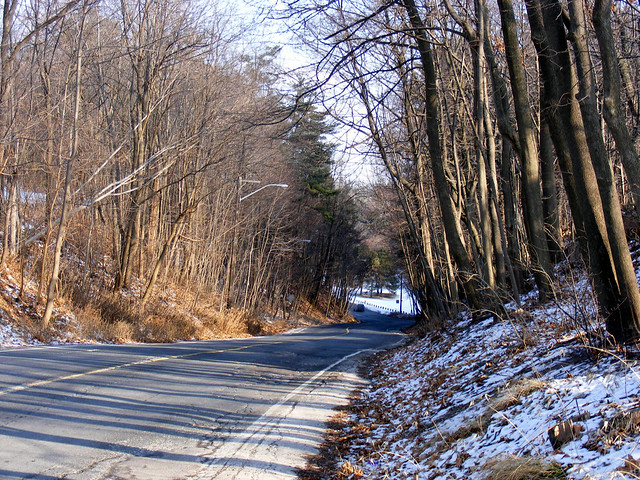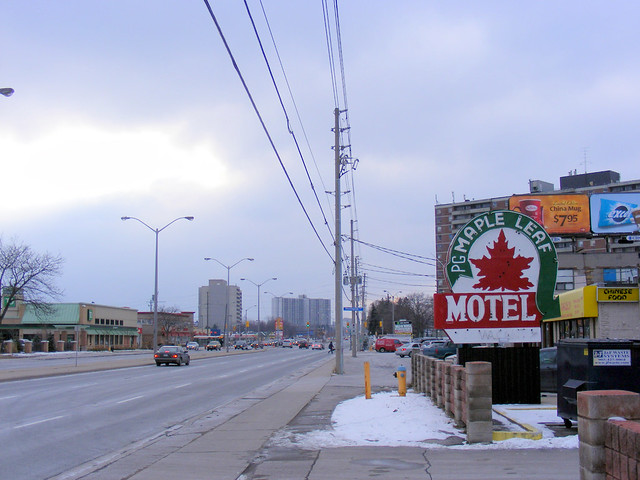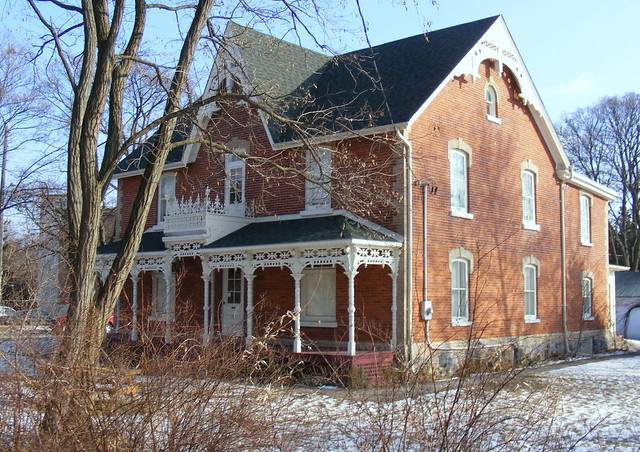West Hill and its neighbouring “lost” village, Highland Creek (featured two weeks ago) share a common early history. Both villages were located strategically along Kingston Road and adjacent to Highland Creek, a source of power for early mills. While suburban sprawl and the widening of Highway 2 (Kingston Road) removed much of the community’s built heritage, there is much to be seen just steps away from the modern throughfare. Thanks partly to its size, West Hill still carries on as the name of the Kingston-Morningside neighbourhood, lending its name to a nearby plaza, a high school and other community institutions.
West Hill (named as such as it was on the west side of the Highland Creek valley) was officially established as a post office in 1879, but developed into a large, yet unincorporated, village in the late 19th century separately from the older Highland Creek. It had its own hotels, post office and community structures. And in 1906, West Hill, like Highland Creek distant from mainline railways, was linked to Toronto by the Scarboro Division of the Toronto and York Radial Railway network, This gave the community the status of a minor transportation hub and encouraged further growth. But highway improvements, ubiquity of the private automobile and the replacement of slow stagecoaches with new gasoline buses changed everything. The TTC took over the old Scarboro radial in 1927 and replaced with its own Grey Coach buses east of Scarborough Post Office (Markham Road) in 1930 (and from there to Birchmount Avenue in 1936). The 86 Scarborough bus route, rerouted to connect with the Bloor-Danforth subway instead of the streetcar, still serves this area, the direct legacy of the old radial.
But as the automobile took over, motels and tourist cabins began to dominate the eastern entrance to Toronto, just as on the west side, the (in)famous motel strip centered at the point where the Queen Elizabeth Way met Lake Shore Boulevard near the Humber River. These new roadside conveniences replaced the old village taverns that relied on the stagecoach and farm-to-market trade. Some of these old motels, with the neon signs and 1940s and 1950s roadside architecture, still survive amidst the later commercial sprawl serving the new subdivisions and rental towers in the area.
While many of the old village buildings – the post office, the hotel and even the school – have disappeared, the construction of Highway 2A as far as Highland Creek just to the east saw a new 4-lane Kingston Road bypass the old, narrow and steep roadway to meet the new modern expressway and helped to preserve some of the old building stock. Today, over a dozen houses and two churches, and the old un-urbanized two-lane Kingston Road provide one of the strongest visual connections to Scarborough’s rural past.
 Melville Presbyterian Church, built in 1852, is one of two historic churches still standing.
Melville Presbyterian Church, built in 1852, is one of two historic churches still standing.
 Old Kingston Road leads east into to the Highland Creek valley and on to Highland Creek, Pickering and Kingston
Old Kingston Road leads east into to the Highland Creek valley and on to Highland Creek, Pickering and Kingston
 The modern Kingston Road, lined with stores and motels, reveals little of West Hill’s past
The modern Kingston Road, lined with stores and motels, reveals little of West Hill’s past






2 comments
I live in the area, and used to go to day camp in the Melville Church pictured. Defenitely wish more of this was preserved instead of building the godawful suburban sprawl that so characterizes much of Scarborough today. Doing so would have made walking and transit much more useful choices in the area.
Thanks again for this excellent series, you have captured this “village” well. As a member of Melville Church, I have often had the opportunity to take a moment and appreciate this little slice of Old Scarborough. There are some well-preserved homes in the immediate area, one of which you have shown (which was recently restored). Another highlight is the old church Manse (from which Manse Road gets its name) just across Old Kingston Road from the church.
Though they share a neighbourhood name, Old Kingston Road and Kingston road feel miles apart. As I am sure the author experienced, walking along Kingston Road is an unpleasant experience at the best of times. It is truly a shame that what could be a great boulevard like Kingston is subjected to run-down strip malls, 70s high-rise slabs, and hectares of parking.